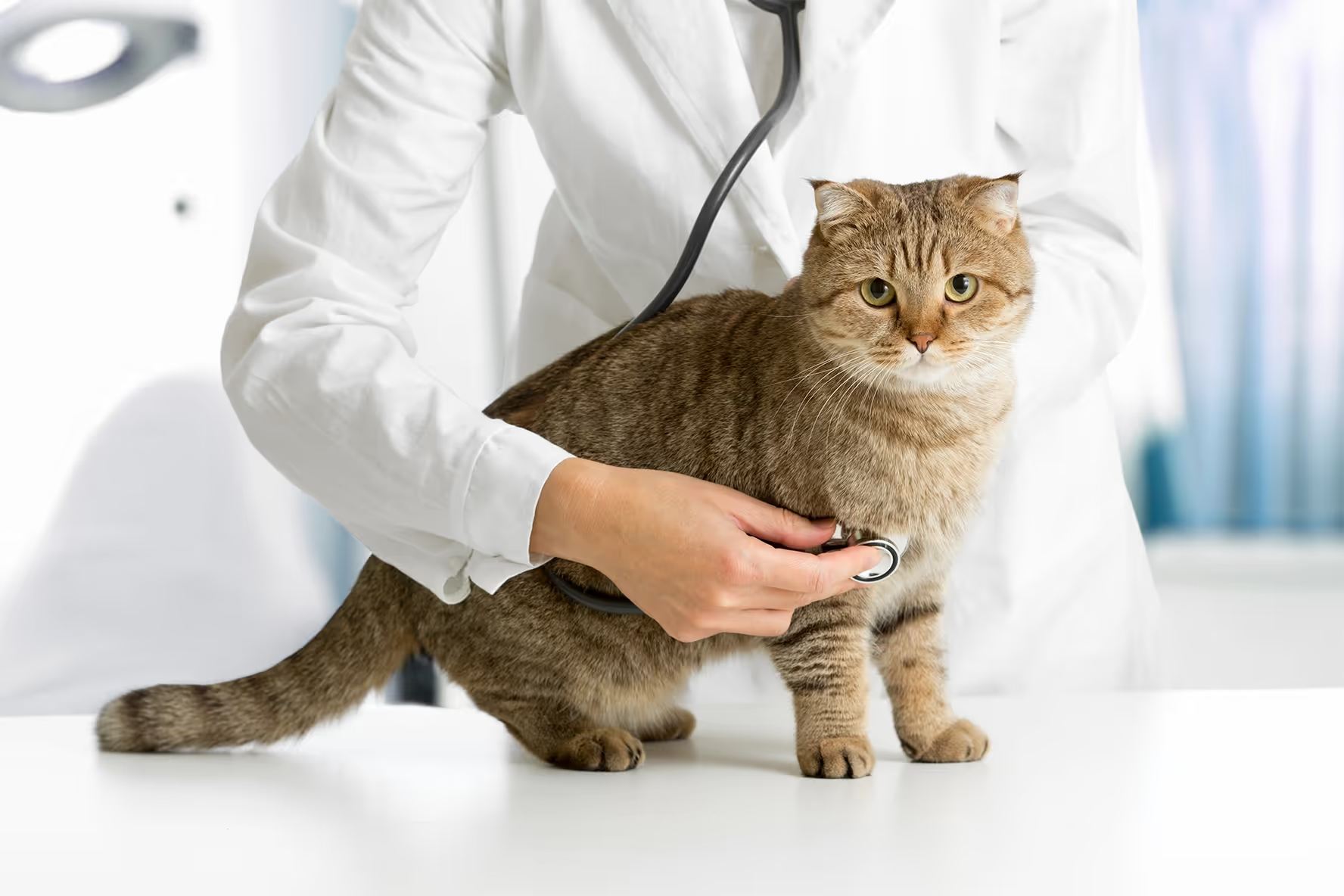
Goldendoodles, a popular hybrid of Golden Retrievers and Poodles, inherit many traits from their parent breeds, including intelligence, friendliness, and an affectionate nature. However, their unique genetic makeup also brings distinct health concerns.
Understanding the similarities between these two breeds is crucial, but recognizing the differences in their health profiles is key to ensuring Goldendoodles receive the proper care to live long, happy lives. In this post, we'll explore the specific health issues that Goldendoodle owners should be aware of.
Common Health Concerns in Goldendoodles
Hip Dysplasia
Like many larger dogs, Goldendoodles are prone to hip dysplasia, a genetic condition where the hip joint doesn’t fit properly into the socket. This misalignment leads to pain, inflammation, and eventually arthritis—if left untreated. Hip dysplasia is especially common in Goldendoodles due to their Golden Retriever lineage. While the Poodle parent may contribute to slightly less frequent occurrences, it’s still a prevalent concern. Regular vet checkups, a healthy diet, and keeping your Goldendoodle at an ideal weight can help manage or prevent the severity of this condition. Additionally, physical activity should be tailored to each dog’s abilities—too much high-impact exercise may worsen the condition over time.1
Progressive Retinal Atrophy (PRA)
Progressive Retinal Atrophy (PRA) is an eye condition that gradually leads to blindness. Both Golden Retrievers and Poodles can carry this genetic disorder, making it a potential risk for Goldendoodles. Symptoms usually begin with night blindness, eventually progressing to total vision loss. Unfortunately, there’s no cure for PRA, but responsible breeders can test for the gene before breeding to reduce the likelihood of the condition appearing. If your Goldendoodle is diagnosed, adapting to a life without sight is often easier than you might expect, as dogs rely heavily on their other senses. Keeping your dog safe and well-oriented in their surroundings will be key in managing this condition.3
You can learn a bit about how to help a dog losing their vision in this post.
Ear Infections
Goldendoodles, especially those with floppy, Poodle-like ears, are prone to ear infections. Their thick fur can trap moisture in the ear canal, creating the perfect environment for bacteria and yeast to thrive. Ear infections can cause discomfort, head shaking, and a noticeable odor from the ears. Regular ear cleanings, especially after swimming or baths, can help prevent infections. Pay attention to any signs of irritation, and consult your vet if you suspect an issue. Keeping the ears clean and dry is one of the best ways to keep this common health concern at bay.2,4
Matting
Grooming is essential for maintaining the health and well-being of Goldendoodles, as their curly or wavy coats are prone to matting if not properly cared for. Regular brushing helps prevent mats, which can form when loose fur tangles and knots together. Left untreated, matting can lead to several health problems. Mats can pull tightly on the skin, causing discomfort, irritation, and even painful sores. They can also trap moisture, dirt, and bacteria close to the skin, increasing the risk of infections or hot spots.
In severe cases, matted fur can restrict airflow to the skin, which may cause overheating or skin conditions that require medical attention. Additionally, grooming allows for early detection of parasites like fleas and ticks, as well as any abnormalities such as lumps or rashes. Regular grooming sessions, including professional trims and at-home brushing, are key to keeping your Goldendoodle’s coat healthy and mat-free.2
Allergies
Goldendoodles can inherit allergies from either of their parent breeds, with food, environmental, and skin allergies being the most common. Signs of allergies in Goldendoodles include excessive licking, itching, redness of the skin, and ear infections. Food allergies might cause gastrointestinal upset as well as licking the paws and frequent ear infections, while environmental allergies could lead to red eyes with discharge, sneezing, or itchy skin which in the dog can be scratching, as well as licking the paws excessively. Since Goldendoodles often have sensitive skin, they may develop contact dermatitis from certain shampoos, plants, or cleaning products. Identifying the root cause of the allergy can be tricky, so working closely with a vet to establish a treatment plan—whether that involves dietary changes, medication, or lifestyle adjustments—is essential to managing allergies.2
Hypothyroidism
Hypothyroidism is a condition where the thyroid gland doesn’t produce enough hormones, leading to a slow metabolism. This issue is common in both Golden Retrievers and Poodles, making it a significant concern for Goldendoodles. Symptoms include weight gain, lethargy, hair loss, and skin issues. While hypothyroidism can’t be cured, it can be managed effectively with medication that replaces the missing hormones. If your Goldendoodle seems unusually sluggish or starts gaining weight without changes in diet, a vet checkup and blood test can confirm whether hypothyroidism is the cause. Regular monitoring and medication will keep your dog feeling energetic and healthy.3
Common Cancers in Golden Doodles
Hemangiosarcoma
Hemangiosarcoma is a type of cancer that affects the blood vessels and is common in both Golden Retrievers and Goldendoodles. This aggressive cancer often targets organs like the spleen, liver, and heart, making early detection difficult as symptoms may not appear until the cancer has advanced. Signs can include sudden weakness, pale gums, or collapse, often resulting from internal bleeding.
Unfortunately, hemangiosarcoma is highly malignant and tends to spread quickly. While treatment options like surgery and chemotherapy are available, the prognosis is often short. Regular veterinary checkups and being vigilant of sudden changes in your Goldendoodle’s health can help with early intervention, though it’s a challenging cancer to manage.
You can learn more about hemangiosarcoma in our blog here.
Osteosarcoma
Osteosarcoma, a bone cancer that is more common in large breeds, can also affect Goldendoodles. It typically presents as lameness or swelling in the limbs and can be very painful. While the condition is rare in Poodles, the Golden Retriever lineage increases the risk in Goldendoodles. Osteosarcoma is known for its aggressive nature and tendency to spread to the lungs, making early diagnosis crucial for improving the outcome. Treatment often involves amputation of the affected limb followed by chemotherapy, which can help extend and improve the quality of your dog’s life.
You can learn more about osteosarcoma in our blog here.
Mast Cell Tumors
Mast cell tumors are a type of skin cancer that can vary in severity from benign to highly malignant. Goldendoodles can develop these tumors due to their Golden Retriever heritage. Mast cell tumors may appear as lumps or bumps on the skin and are often mistaken for harmless growths, which is why regular monitoring of any skin changes is important. If diagnosed, the treatment plan depends on the tumor’s grade and spread. Surgery is often the first step, with chemotherapy or radiation considered if the cancer is more complicated. While some mast cell tumors can be cured with proper treatment, others may require long-term management.
You can learn more about mast cell tumors in our blog here
Lymphoma
Lymphoma is one of the most common cancers in dogs, and Goldendoodles are at risk due to their Golden Retriever genetics. This cancer affects the lymphatic system, which includes lymph nodes, spleen, and bone marrow. Early signs of lymphoma include swelling of the lymph nodes, often noticed under the jaw, in the armpits, or near the groin. As lymphoma progresses, it can cause fatigue, weight loss, and loss of appetite. While lymphoma is an aggressive cancer, it often responds well to chemotherapy, with some dogs achieving remission. However, it’s important to note that remission doesn’t mean a cure, and ongoing treatment may be necessary to manage the disease.
Lymphoma is ImpriMed’s focus, we have many resources available on our blog for you to take a look at to learn more.
Treatment of Lymphoma in Golden Doodles
Lymphoma is a challenging diagnosis for Goldendoodles, but there are several treatment options available to help manage the disease. One of the most widely used methods is chemotherapy, as it works throughout the body to target the cancerous cells in the lymphatic system. Chemotherapy for Goldendoodles can be administered in different ways, including oral medications and infusions. Treatment protocols can vary, with some involving a combination of drugs over several months, while others may use a single medication given less frequently, such as once a month.
Chemotherapy is typically the first treatment choice for lymphoma due to its ability to address the disease systemically. Another option, though less common, is half-body radiation. This approach targets one half of the body at a time, mimicking the widespread effects of chemotherapy, but it is generally used in specific cases of canine lymphoma.
For some Goldendoodle owners, palliative care through steroid-only treatment may be chosen to prioritize comfort. This method focuses on managing symptoms rather than attempting to eliminate the cancer, offering relief during the final stages of the disease. Although it’s a difficult decision, this approach may provide the best quality of life under certain circumstances.
Ultimately, selecting the right course of treatment depends on both your dog’s condition and your family’s needs. It's important to discuss all available options with your vet to determine the most appropriate plan for your Goldendoodle.
You can learn more about treatment options available to your furry family member in our post here.


